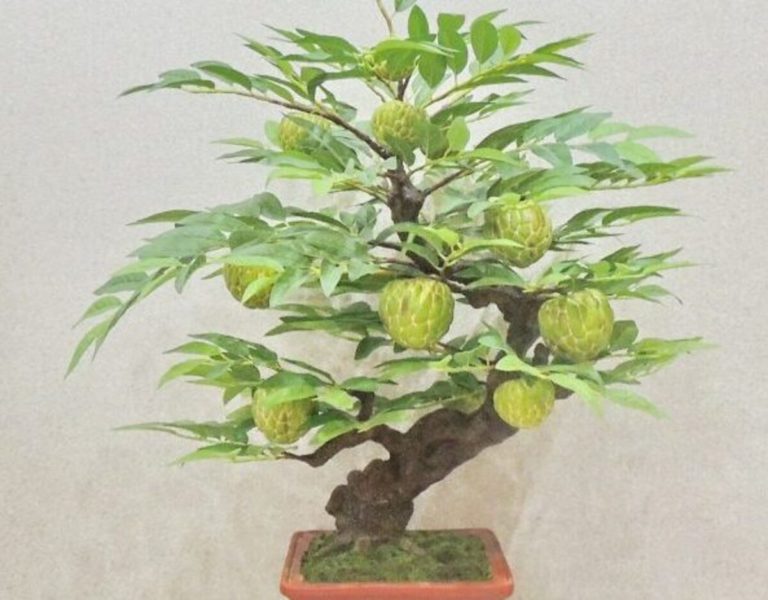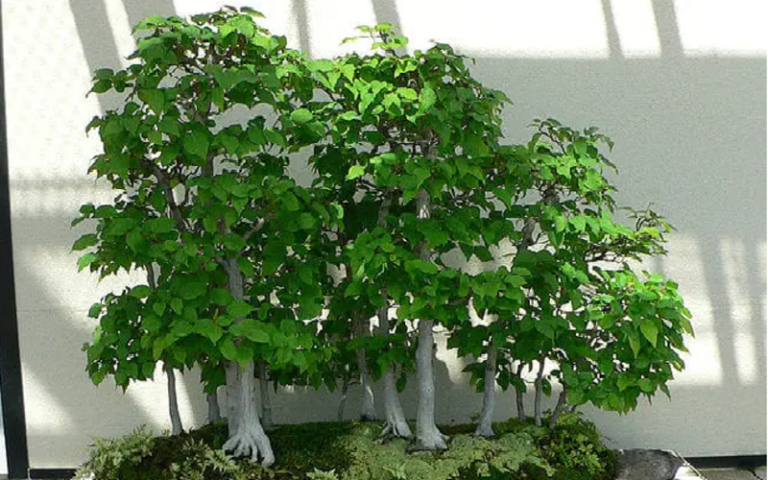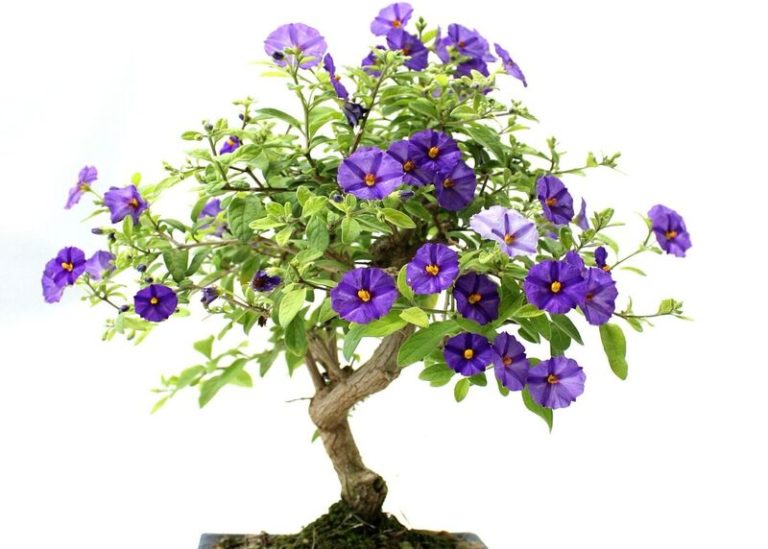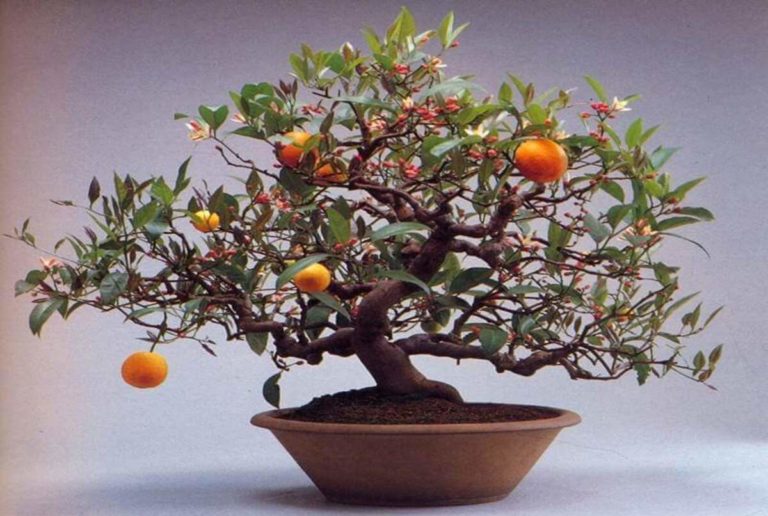Bonsai Strawberry: Miniaturizing Nature’s Sweetest Treasures
Have you ever thought about having your own strawberry plant ? Bonsai strawberries are a unique and delicious twist on classic bonsai plants. In this article we will talk about the art of growing bonsai strawberries and give you easy steps to get started.
What is a Bonsai Strawberry?
Bonsai strawberries are miniature versions of regular strawberry plants grown using bonsai techniques. They involve carefully selecting compact strawberry varieties and cultivating them in shallow containers with well-draining soil. Regular pruning and shaping are done to maintain the desired size and shape. Bonsai strawberries require adequate sunlight, proper watering, and suitable display containers. They offer a unique and visually appealing addition to gardens and indoor spaces.
Bonsai strawberries and Their Symbolism
Bonsai strawberries, beyond their aesthetic appeal, can also carry symbolism and deeper meanings. Here are some symbolic aspects associated with bonsai strawberries:
- Miniaturization and Perfection: Bonsai itself represents the art of miniaturization, capturing the essence of a full-sized tree within a small container. Bonsai strawberries take this concept further by symbolizing the pursuit of perfection in miniature form. They embody the idea of creating beauty and harmony in a compact and delicate package.
- Patience and Time: Growing bonsai strawberries requires patience and dedication. It is a slow and meticulous process that involves careful pruning, training, and shaping over time. Bonsai strawberries symbolize the value of patience, reminding us to appreciate the beauty that unfolds gradually and to embrace the journey rather than focusing solely on the end result.
- Balance and Harmony: Bonsai strawberries are crafted to embody a sense of balance and harmony between nature and human intervention. They represent the delicate equilibrium between shaping and respecting the natural growth patterns of the plant. Bonsai strawberries remind us of the importance of finding balance in our own lives and fostering harmony between our actions and the natural world.
- Connection to Nature: Strawberry bonsai serve as a reminder of our link to nature and our responsibility to take care of the earth. By taking care of and feeding these tiny trees, we learn to appreciate the natural world and all its beauty more. Bonsai strawberries remind us that it’s our job to keep and protect nature’s wonders.
- Symbol of Delicacy and Beauty: Strawberry bonsai are naturally delicate and pretty. They show how complicated and fragile nature is, which makes us think about how short life is. Bonsai strawberries remind us that beauty is fleeting and to accept and enjoy the perfect times in our lives while we can.
Bonsai strawberries encompass symbolism related to miniaturization, patience, balance, connection to nature, and the delicate beauty of life. They serve as reminders and inspirations for us to find harmony, appreciate the journey, and cherish the natural world around us.
Characteristics of the Bonsai Strawberries
Bonsai strawberries possess several distinct characteristics that set them apart from regular strawberry plants. Here are some key characteristics of bonsai strawberries:
Miniature Size: The most notable feature of bonsai strawberries is their small size. They are intentionally cultivated to be compact and miniature, resembling fully-grown strawberry plants but on a much smaller scale. This makes them suitable for growing in shallow containers and ideal for indoor or limited-space gardening.
Delicate and Fine Branching: Bonsai strawberries have delicate and finely branched stems. The branches are meticulously pruned and shaped to achieve a balanced and aesthetically pleasing form. The intricate branching patterns contribute to their artistic appeal and add to the overall charm of the bonsai tree.
Fruit Production: Despite their miniature size, bonsai strawberries are capable of producing small fruits. The berries they bear are proportionate to the overall size of the plant and are often miniature versions of regular strawberries. While the yield may not be as abundant as that of full-sized strawberry plants, the presence of tiny strawberries adds to the enchantment of the bonsai tree.
Adaptability to Container Gardening: Bonsai strawberries are well-suited for container gardening due to their compact size and shallow root system. They can thrive in small pots or specialized bonsai containers. This adaptability allows enthusiasts to enjoy growing bonsai strawberries indoors, on balconies, or in small outdoor spaces.
Artistic and Decorative Appeal: Bonsai strawberries are valued for their artistic and decorative appeal. They serve as living works of art, combining horticulture with aesthetics. The miniature size, delicate foliage, and occasional fruiting make bonsai strawberries visually captivating and unique additions to gardens, tabletops, or display areas.
Pruning and Shaping Potential: By trimming and shaping them, you can show your creativity with bonsai strawberries. Bonsai fans can make many different shapes and styles by carefully trimming and training the branches, such as a waterfall, a formal upright, or an informal upright. A key part of growing bonsai is being able to shape and create the plant to fit your artistic vision.
Longevity and Maintenance: With proper care and maintenance, bonsai strawberries can live for several years, providing enjoyment and beauty over an extended period. Regular pruning, watering, fertilizing, and protection from extreme conditions contribute to the longevity of these miniature trees.
Bonsai strawberries possess unique characteristics, including their small size, delicate branching, fruit production, adaptability to containers, artistic appeal, shaping potential, and longevity. These characteristics make them fascinating and rewarding subjects for bonsai enthusiasts, allowing them to cultivate and enjoy the beauty of strawberries in miniature form.
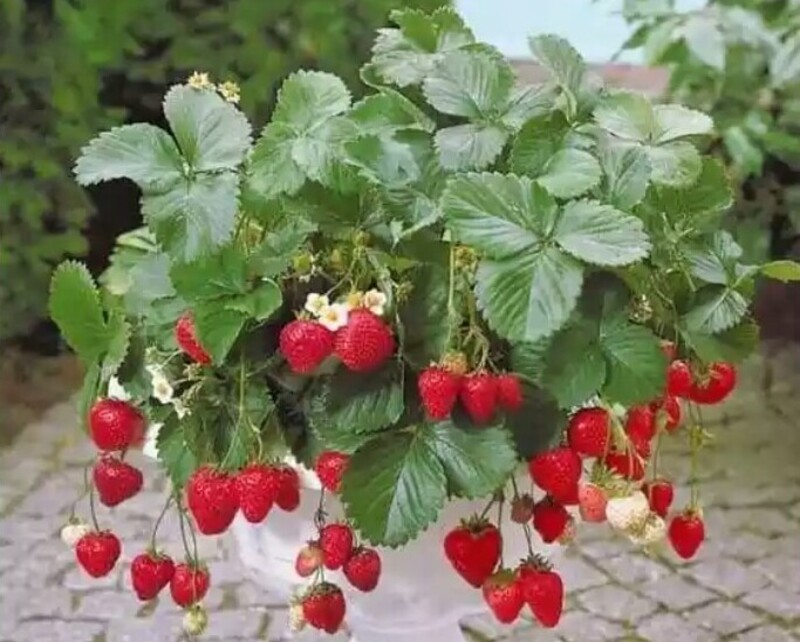
Types of Bonsai Strawberries
While there aren’t many particular bonsai strawberry cultivars available, there are a few strawberry varieties that are ideal for bonsai maintenance. Here are some examples of popular types:
1. Alpine Strawberries (Fragaria vesca): Alpine strawberries are popular choices for bonsai strawberries. They naturally have smaller fruit and compact growth habits, making them ideal for bonsai cultivation. Alpine strawberries often produce white or red berries, and they can be quite flavorful.
2. Small-Fruited Varieties: There are various small-fruited strawberry varieties that can be used for bonsai. These include varieties like ‘Mignonette’ and ‘Temptation,’ which have smaller fruits and more compact growth habits than standard strawberry varieties. They are well-suited for bonsai due to their naturally smaller size.
3. Wild Strawberries (Fragaria vesca): Wild strawberries, also known as woodland strawberries, can be suitable for bonsai cultivation. They have smaller fruits and are known for their intense flavor. Wild strawberry plants have delicate foliage and lend themselves well to the miniature aesthetics of bonsai.
4. Ornamental Strawberries: Some ornamental strawberry varieties, such as Fragaria x ananassa ‘Lipstick’ or ‘Pink Panda,’ can be used for bonsai. These varieties often have attractive foliage and small berries, adding visual interest to the bonsai tree.
It’s worth noting that the choice of strawberry variety for bonsai depends on personal preference, local climate, and availability. While these are some common types used for bonsai strawberries, any strawberry variety with compact growth habits and smaller fruit can potentially be adapted for bonsai cultivation.
Remember to consider the specific needs and care requirements of the chosen strawberry variety, ensuring that it can thrive in the bonsai environment, including the limited space of a container and the shaping techniques involved in bonsai cultivation.
How to Grow a Bonsai Strawberry
Growing a bonsai strawberry may be a fun and rewarding process. Here are some tips for growing your own bonsai strawberry:
Select the Right Strawberry Variety: Choose a strawberry variety that is well-suited for bonsai cultivation. Look for compact and small-fruited varieties like Alpine strawberries or specific bonsai strawberry cultivars if available.
Obtain a Healthy Plant: Purchase a healthy strawberry plant from a reputable nursery or garden center. Ensure that the plant is disease-free and has well-developed roots.
Choose a Suitable Container: Choose a shallow container or bonsai pot with sufficient drainage holes. The size of the strawberry plant should be proportionate to the size of the pot. A shallow container helps the roots to spread uniformly and gives the bonsai tree solidity.
Prepare the Soil: Use a strawberry-growing soil mix that is well-drained. A mixture of organic potting soil, perlite, and coarse sand is advised. This aids in adequate drainage and the prevention of soggy soil.
Planting the Strawberry: Place the strawberry plant in the pot with care, ensuring that the roots are not crowded. Fill the container carefully with the prepared soil mix, covering the roots and gently firming the dirt around the plant.
Provide Adequate Sunlight: Place your bonsai strawberry tree in a location that receives at least 6–8 hours of direct sunlight each day. If growing indoors, place the bonsai near a sunny window or provide supplementary grow lights to ensure sufficient light exposure.
Watering and Fertilizing: The bonsai strawberry should be watered often so that the soil stays properly wet. Avoid overwatering to avoid wet soil. Follow the guidelines on the package to give the plant a balanced, water-soluble nutrient. Use the fertilizer when the plants are growing to help them grow well and make more flowers.
Pruning and Shaping: To keep the bonsai strawberry tree at the right size and shape, cut and shape it often. Cut back long stems and get rid of any that are dead or broken. When trimming, be careful not to hurt the delicate strawberry stems. If you want, you can also use wiring to move the branches into specific places.
Pest and Disease Management: Watch for common bugs like aphids and spider mites. If you find pests, get rid of them quickly using natural ways. Check the plant for signs of disease, like fungal diseases, and do what you need to do to stop them from spreading.
Display and Enjoy: Once your bonsai strawberry tree has matured and been shaped to your desired form, display it in a suitable location. Consider using a stand or decorative tray to elevate its visual appeal. Enjoy the beauty of your miniature strawberry tree and appreciate the effort and care you’ve put into its growth.
Remember that growing a bonsai strawberry requires patience and attention to detail. Regular care, watering, pruning, and protection from extreme conditions will help your bonsai strawberry thrive and bring joy to your gardening endeavors.
Benefits of the Bonsai Strawberry
Bonsai strawberries offer several benefits that make them a unique and rewarding addition to your garden or indoor space. Here are some of the benefits of growing bonsai strawberries:
- Aesthetic Appeal: Bonsai strawberries are visually captivating. Their miniature size, delicate foliage, and occasional fruiting make them a charming and attractive addition to any setting. They serve as living works of art and can enhance the aesthetic appeal of your garden, balcony, or indoor space.
- Limited Space Gardening: Bonsai strawberries are ideal for gardeners with limited space. Their compact size allows them to thrive in small containers, making them suitable for balcony gardens, patios, or indoor gardening. Bonsai strawberries offer an opportunity to grow your own fruit even if you have limited outdoor space.
- Indoor Gardening: Bonsai strawberries can be grown indoors, bringing the beauty of nature into your living spaces. By placing them near a sunny window or using grow lights, you can create a mini garden inside your home, allowing you to enjoy the pleasure of gardening year-round.
- Educational and Therapeutic Value: Growing bonsai strawberries and taking care of them can be both educational and soothing. It’s a chance to learn about how plants grow, gardening, and the art of bonsai. Bonsai gardening can also help you relax and relieve stress by giving you a chance to connect with nature and find peace in caring for live plants.
- Fruit Production: Bonsai strawberries can bear small fruits, allowing you to enjoy the delicious taste of freshly grown strawberries. While the yield may not be as abundant as that of full-sized strawberry plants, the miniature berries carry a unique charm and can be a delightful treat.
- Conversation Starter and Gift Idea: Strawberry bonsais are a good way to start a discussion. Their unique look and the skill it takes to grow them can make people curious and impressed. Also, they make thoughtful and unique gifts for people who like gardening, wildlife, or bonsai because of its beauty.
- Connection with Nature: Growing bonsai strawberries lets you to connect with nature more deeply. You may watch the growing process, the changing seasons, and the beauty of nature in a small form by caring for these little trees. Bonsai strawberries remind us of our responsibilities as environmental stewards and give an opportunity to enjoy the natural world’s beauties.
The benefits of growing bonsai strawberries include their aesthetic appeal, suitability for limited space and indoor gardening, educational and therapeutic value, fruit production, as well as their ability to serve as conversation starters and gifts. Cultivating bonsai strawberries allows you to engage with nature, unleash your creativity, and enjoy the beauty of these miniature fruit-bearing trees.
Displaying and Showcasing the Bonsai Strawberry
Displaying and showcasing your bonsai strawberry tree can elevate its visual appeal and create a captivating focal point. Here are some tips for displaying and showcasing your bonsai strawberry:
1. Choice of Container: Select a suitable container that complements the aesthetics of your bonsai strawberry. Choose a shallow pot or a specialized bonsai container that allows the roots to spread evenly. Consider the material, shape, and color of the container to enhance the overall presentation.
2. Stand or Decorative Tray: Elevate your bonsai strawberry tree by placing it on a stand or a decorative tray. This adds height and creates a more prominent display. Choose a stand or tray that matches the style and enhances the overall aesthetic appeal of the bonsai tree.
3. Positioning: Place your bonsai strawberry tree in a location that highlights its beauty. Consider placing it on a tabletop, a shelf, or a dedicated bonsai display area. Ensure that it is easily visible and can be admired from different angles.
4. Background and Surroundings: Create a visually pleasing backdrop for your bonsai strawberry. Choose a background that provides contrast or enhances the colors and textures of the tree. Avoid cluttered or distracting elements that may detract from the focal point.
5. Complementary Elements: Add complementary elements to enhance the overall display. For example, you can place small rocks, pebbles, or moss around the base of the bonsai tree to create a natural and harmonious setting. These elements can help create a sense of balance and add visual interest.
6. Lighting: Consider using appropriate lighting to highlight your bonsai strawberry tree. Natural sunlight is ideal, but if growing indoors, ensure that the tree receives sufficient light. You can also use accent lighting, such as small spotlights or LED grow lights, to illuminate and showcase the tree’s beauty.
7. Regular Maintenance: Keep your bonsai strawberry tree well-maintained to ensure its optimal display. Regularly prune and shape the tree to maintain its desired form. Remove any dead or yellowing leaves or branches promptly. Ensure that the tree is healthy and free from pests or diseases.
8. Seasonal Displays: Consider adapting your display according to the changing seasons. For example, during the flowering season, you can add small decorative elements or flowers that complement the colors of the bonsai strawberry blossoms. Adjusting the display with seasonal elements adds interest and variety.
Remember that displaying and showcasing your bonsai strawberry is a personal expression of creativity. Experiment with different arrangements, containers, and accessories to find a presentation that highlights the unique beauty of your bonsai strawberry tree.
Styling and Design of a Bonsai Strawberry
The styling and design of a bonsai strawberry involve shaping the tree’s form, branches, and foliage to create a visually appealing and balanced composition. Here are some tips for styling and designing your bonsai strawberry:
Choose a Style: Select a bonsai style that suits your vision and the characteristics of the strawberry plant. Common bonsai styles include formal upright, informal upright, slanting, cascade, and semi-cascade. Consider the natural growth habits of the strawberry plant and adapt them to the desired style.
Trunk and Branch Formation: Begin by evaluating the existing trunk and branches of the strawberry plant. Choose the main trunk or leader branch that will form the central line of the bonsai tree. Remove unwanted branches or foliage that do not contribute to the desired design.
Pruning and Shaping: Regular pruning is crucial for shaping the bonsai strawberry. Trim back long branches to create a more compact and balanced silhouette. Encourage the growth of lateral branches by pinching off the tips, which helps to create a fuller and denser canopy.
Wiring: Wiring is a technique used to guide the branches into specific positions. Use bonsai wire to gently wrap around branches and shape them. Be cautious when wiring the delicate stems of strawberry plants to avoid damaging them. Ensure that the wire is not too tight to allow for growth.
Foliage Management: Bonsai strawberries typically have abundant foliage. Regularly remove excess leaves to allow light to penetrate and promote airflow within the canopy. This helps maintain overall health and prevents the risk of fungal diseases.
Accentuating Fruit: If your bonsai strawberry produces fruit, consider accentuating it as a focal point in the design. Allow some fruits to develop and showcase them by removing nearby foliage or positioning them in a prominent spot within the canopy.
Balance and Proportion: Aim for balance and proportion in your bonsai strawberry design. Ensure that the size and shape of the container, trunk, branches, and foliage harmonize with each other. Avoid having one part overpower or dominate the overall composition.
Continual Adjustment: Bonsai styling is an ongoing process that requires continuous monitoring and adjustment. Regularly evaluate the tree’s growth and form, making necessary pruning and shaping adjustments to maintain the desired design.
Remember that the styling and design of a bonsai strawberry is a creative endeavor, and it’s important to enjoy the process. Take your time, observe the tree’s natural growth patterns, and make gradual adjustments to achieve the desired aesthetic appeal. Each bonsai strawberry will have its own unique character and beauty, so embrace the individuality of your tree while creating a captivating design.

How to Care for and Maintain a Bonsai Strawberry
Caring for and maintaining a bonsai strawberry requires attention to specific needs and regular upkeep. Here are some essential tips to help you care for and maintain your bonsai strawberry:
- Sunlight: Bonsai strawberries thrive in full sunlight. Place your tree in a location that receives at least 6–8 hours of direct sunlight each day. If growing indoors, position the bonsai near a sunny window or provide supplementary grow lights to ensure sufficient light exposure.
- Watering: Proper watering is crucial for the health of your bonsai strawberry. Check the moisture level of the soil regularly by inserting your finger about an inch into the soil. Water thoroughly when the top inch of soil feels slightly dry. Ensure that the water reaches the root zone, but avoid overwatering, as it can lead to root rot.
- Soil and Drainage: For bonsai strawberries to grow, the dirt needs to be able to drain water well. Use a mix of organic potting soil, perlite, and loose sand to make a well-balanced soil. This blend lets the soil drain well while keeping some wetness for the roots of the plant.
- Fertilizing: Regular fertilization is important to provide the necessary nutrients for your bonsai strawberry. Use a balanced, water-soluble fertilizer specifically formulated for strawberries. Follow the manufacturer’s instructions for application rates and frequency. Apply the fertilizer during the growing season to support healthy growth and fruit production.
- Pruning and Trimming: Prune your bonsai strawberry regularly to maintain its shape and size. Remove any dead, diseased, or damaged branches or foliage. Trim back long branches to encourage a compact and balanced form. Be cautious when pruning around fruit-bearing branches to avoid damaging developing fruits.
- Pests and Diseases: Keep an eye out for common pests like aphids, spider mites, or slugs. Regularly inspect your bonsai strawberry for signs of infestation and take appropriate measures to control pests. Remove any affected leaves or branches promptly. Additionally, ensure good air circulation and avoid overwatering to prevent the onset of fungal diseases.
- Winter Care: Bonsai strawberries may need special attention during the winter, depending on your climate. If temperatures drop below freezing, protect your tree by bringing it indoors or providing adequate insulation. Ensure that the plant receives enough light during the winter months.
- Repotting: Bonsai strawberries generally require repotting every 2–3 years. Repotting helps refresh the soil, remove any root-bound conditions, and maintain the health of the tree. Repot in early spring before the growing season begins, using fresh soil mix and carefully pruning any excess roots.
- Monitoring and Adjusting: Regularly monitor the health and growth of your bonsai strawberry. Look for signs of stress, such as wilting, yellowing leaves, or stunted growth. Adjust your care routine accordingly by adjusting watering, fertilizing, or providing additional sunlight if needed.
By following these care guidelines and providing regular attention, you can ensure the health and vitality of your bonsai strawberry. Remember to enjoy the process of caring for your tree, as it is a rewarding and fulfilling experience.
Bonsai Strawberry Care Sheet
| Aspect | Care Tips |
| Watering | Check soil moisture regularly and water when the top inch feels slightly dry. |
| Ensure thorough watering, allowing water to reach the root zone. Avoid overwatering to prevent root rot. | |
| Sunlight | Place in a location that receives 6-8 hours of direct sunlight daily. |
| If growing indoors, provide supplementary grow lights or place near a sunny window. | |
| Temperature | Bonsai strawberries prefer temperatures between 60-75°F (15-24°C). |
| Protect from extreme heat or frost; adjust placement accordingly. | |
| Humidity | Bonsai strawberries can tolerate average room humidity levels. |
| Mist the foliage occasionally to increase humidity, especially in drier environments. | |
| Fertilization | Use a balanced, water-soluble fertilizer formulated for strawberries. |
| Follow the manufacturer’s instructions for application rates and frequency. | |
| Pruning and Trimming | Regularly prune to maintain shape and size, removing dead or damaged branches. |
| Trim back long branches to encourage a compact form and balanced growth. | |
| Wiring and Styling | Use wiring techniques carefully, avoiding damage to delicate stems. |
| Shape branches gently into desired positions, considering the bonsai style. | |
| Repotting | Repot every 2-3 years in early spring using fresh soil mix and pruning excess roots. |
| Repotting helps refresh soil and promote healthy growth. | |
| Pest and Disease Control | Monitor for common pests like aphids, spider mites, and slugs. |
| Take appropriate measures to control pests, such as organic pest control methods. | |
| Ensure good air circulation and avoid overwatering to prevent fungal diseases. | |
| Winter Care | Protect from freezing temperatures by bringing indoors or providing insulation. |
| Ensure adequate light during the winter months. | |
| Regular Maintenance | Regularly monitor the health and growth of your bonsai strawberry. |
| Adjust watering, fertilization, and care routine as needed. | |
| Prune, trim, and shape as necessary to maintain desired form and size. |
This care sheet table gives an idea of the different parts of caring for a bonsai strawberry plant and tips for each part. Remember to care for your bonsai strawberry in a way that fits its needs, and watch it closely to make sure it stays healthy.
Conclusion
Bonsai strawberries offer a delightful and unique gardening experience. By following the simple steps outlined in this article, you can grow and maintain your own bonsai strawberry tree. Enjoy the satisfaction of nurturing these miniature delights and creating a visually captivating display in your garden. Get ready to impress your friends and family with your beautiful bonsai strawberry creation!
FAQ:
Q: What is a Bonsai Strawberry?
A: A Bonsai Strawberry is a miniature version of a strawberry plant that is cultivated in a small container and trained to have the characteristic traits of a bonsai tree. It is a unique and artistic way of growing strawberries in a compact form.
Q: How small are Bonsai Strawberries?
A: Most bonsai strawberries are small. Depending on the type and age of the plant, they can be anywhere from a few inches to about a foot tall. Normal strawberry plants are much bigger than these.
Q: Can Bonsai Strawberries bear fruit?
A: Yes, Bonsai Strawberries have the potential to bear small fruits. While the yield may not be as abundant as that of full-sized strawberry plants, the miniature berries add to the charm and appeal of the bonsai tree.
Q: Can Bonsai Strawberries be grown indoors?
A: Yes, Bonsai Strawberries can be grown indoors. They require sufficient sunlight, so placing them near a sunny window or providing artificial grow lights is necessary for their growth and fruiting.
Q: How often do Bonsai Strawberries need to be watered?
A: When the top inch of dirt on a bonsai strawberry plant feels a little dry, it’s time to water. How often you have to water varies on things like the temperature, the humidity, and the size of the pot. It’s important not to water too much because that can cause root rot.
Q: Do Bonsai Strawberries require special soil?
A: Bonsai Strawberries require well-draining soil that allows for proper root aeration and moisture retention. A mixture of organic potting soil, perlite, and coarse sand is commonly used to create an ideal growing medium.
Q: How do you shape and style a Bonsai Strawberry?
A: Shaping and styling a Bonsai Strawberry involves regular pruning and trimming to maintain the desired size and form. Wiring techniques can also be used to guide the branches into specific positions. Careful attention to the growth pattern and aesthetics of the tree is necessary to achieve the desired bonsai design.
Q: Do Bonsai Strawberries require fertilization?
A: Yes, Bonsai Strawberries require regular fertilization. Using a balanced, water-soluble fertilizer specifically formulated for strawberries helps provide the necessary nutrients for healthy growth and fruit production.
Q: Can Bonsai Strawberries be grown from seeds?
A: Yes, Bonsai Strawberries can be grown from seeds. However, it is more common to start with a young strawberry plant or propagate from runners for faster results.
Q: How long do Bonsai Strawberries live?
A: With proper care and maintenance, Bonsai Strawberries can live for several years. The lifespan can vary depending on factors such as the variety, growing conditions, and care provided.
Q: Can I grow Bonsai Strawberries from seeds?
A: Yes, you can grow Bonsai Strawberries from seeds. However, it may take longer to see results compared to starting with young plants or propagating from runners. Patience and proper care are required during the germination and early growth stages.
Q: What are the best varieties of strawberries for Bonsai cultivation?
A: There are several strawberry varieties suitable for Bonsai cultivation. Some popular choices include Alpine strawberries (Fragaria vesca), Wild strawberries (Fragaria virginiana), and Everbearing strawberries (Fragaria x ananassa). These varieties are known for their compact growth habits and smaller-sized fruits.
Q: How often should I fertilize my Bonsai Strawberry?
A: Bonsai Strawberries benefit from regular fertilization during the growing season. Generally, applying a balanced, water-soluble fertilizer every two to four weeks is recommended. Follow the instructions on the fertilizer packaging for proper application rates.
Q: Can I grow Bonsai Strawberries outdoors?
A: Yes, Bonsai Strawberries can be grown outside, especially in areas with the right temperature. They need full sun, good air movement, and earth that drains well. Make sure you’re protected from extreme heat, cold, or strong winds, based on your environment.
Q: Do Bonsai Strawberries need to be pollinated to bear fruit?
A: Bonsai Strawberries are self-pollinating, which means they do not necessarily require pollinators like bees or wind to set fruit. However, gently shaking the flowers or using a small brush to transfer pollen between flowers can help ensure better fruit production.
Q: Can I keep my Bonsai Strawberry indoors all year round?
A: While Bonsai Strawberries can be kept indoors, they generally require sufficient sunlight to thrive and fruit. If grown indoors permanently, providing adequate light through grow lights is essential to compensate for the lack of natural sunlight.
Q: How do I protect my Bonsai Strawberry from pests and diseases?
A: Regular monitoring and preventive measures can help protect your Bonsai Strawberry from pests and diseases. Inspect the plant regularly for signs of pests such as aphids or spider mites. If detected, use organic pest control methods or insecticidal soap to address the issue promptly. Avoid overwatering and provide proper ventilation to prevent the onset of fungal diseases.
Q: Can I propagate Bonsai Strawberries from runners?
A: Yes, propagating Bonsai Strawberries from runners is a common and effective method. Runners are long, thin stems that emerge from the parent plant and produce new baby plants. You can carefully detach the runners and plant them in separate containers to grow new Bonsai Strawberry trees.
Q: How do I know if my Bonsai Strawberry is healthy?
A: Healthy Bonsai Strawberries usually have leaves that are bright green, grow in a tight cluster, and don’t show any signs of fading or yellowing. The roots should be strong and spread out well in the pot. Check the plant often for signs of pests, diseases, or a lack of nutrients and take action if needed.
Also Read:




